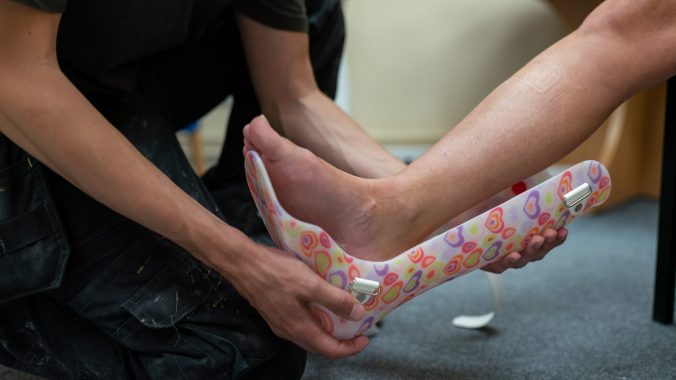Finding your way through the complex web of guidelines and requirements for evidence in healthcare can be challenging. It is easy to imagine that these guidelines are downloaded from above, like a collection of commandments, but the truth is that they are shaped and changed in a complex process of negotiation and deliberation.
My colleagues and I in prosthetics and orthotics in Region Uppsala in Sweden are involved in the procurement of orthopedic devices for patients, such as prostheses, orthoses, splints, sitting frames, medical corsets, orthopedic shoes and insoles. We often ask ourselves an important question: Who should receive tax-funded prosthetics and orthotics devices and how expensive should they be? Where do we find guidelines for our decisions? An example of a guiding document is the general guidelines for the prescription of assistive devices in the County Council of Uppsala (from 2015). This document is based on the laws and guidelines of the parliament, UN conventions and the Council’s own plans. It becomes clear that guidelines are not isolated rules, but rather an interweaving of different norms and values that guide healthcare decisions.
Despite clear priority levels and demands for individual assessment of health effects, we find that patients today are denied orthopedic devices with the argument that there is a lack of evidence that the aid works for the type of diagnosis in question. Is this argument as strong when it comes to orthopedic devices as it is when it comes to drug treatments? In the search for evidence in healthcare, randomized controlled trials (RCTs) are often required. But must all treatments be measured by the same yardstick? Applying an arm cast or using an assistive device that enables walking does not necessarily require the same level of evidence as more complex internal medicine treatments. Sometimes it should be enough to see with your own eyes and observe improvements, such as a better gait or reduced pain.
In addition to this possibly unfair situation, where a small patient group has to suffer from requirements that are reasonable for the majority but not for all patients, the availability and scope of assistive device prescription varies between different regions in Sweden. This variation raises questions about how guidelines and principles for prioritization in healthcare are interpreted in different regions. Although the overarching principles for priority setting are the same (the principle that all humans have equal value and the same right to care, the principle of need and solidarity, and of the principle of cost-effectiveness), the interpretation and application of these principles can apparently differ. Why is it like that? In some regions, a more comprehensive and individually adapted prescription of devices is given, while other regions are more restrictive. This variation raises important questions about fair and equal care. Providing fair and equal care does not just require following rules. It also requires that we deepen our understanding of how these rules are interpreted and applied in different parts of the country, as well as assess which requirements are reasonable in different practices. It is a complex balancing act between ensuring people’s equal value and right to health while managing resources efficiently. Prescription of assistive devices as a tool to support health and participation is emphasized in the guidelines in Uppsala, but it is important to reflect on how this tool is implemented in practice and what impact it has on people’s quality of life. A common basis in the WHO’s international classification of functional status, disability and health is a good starting point (as in the National Board of Health and Welfare’s support for prescribing assistive devices). But continued discussion and reflection is required to ensure that the patient’s individual health condition is taken into account (not just the patient group), and that devices are prescribed fairly across the country.
In my work, I reflect daily on guidelines and requirements for evidence. I think it is valuable if we who work with the prescription of orthopedic devices reflect on the origin of the guidelines and the requirements for evidence that we use in healthcare. Understanding the context around why the guidelines look the way they do is crucial for us to be able to understand and apply them in our practices. For example, how should we interpret the requirement for evidence when working with prosthetics and orthotics?
I will return to discuss possible answers to these questions in future blog posts. With this post I just wanted to raise the questions.

Written by…
Jennifer Viberg Johansson, Associate Professor in Medical Ethics at Uppsala University’s Centre for Research Ethics & Bioethics.
We want to be just





Recent Comments